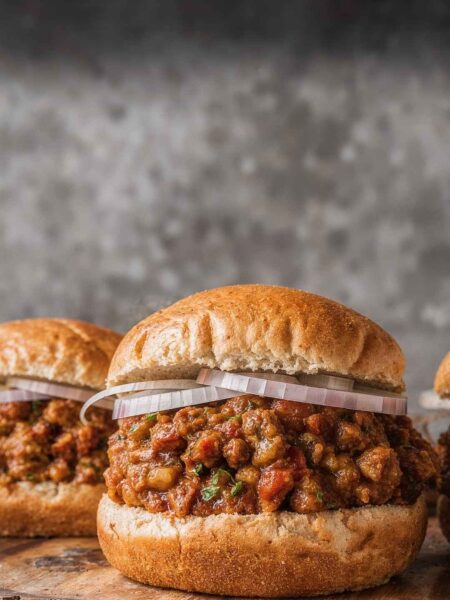Ah, Korean Gochujang sauce. Just saying the name makes my taste buds tingle with anticipation. When I first discovered this spicy, sweet, and savory condiment, it felt like finding a secret key to a treasure chest of flavor.
You’re at a lively summer barbecue, the grill is sizzling, and someone brings out a bowl of grilled chicken glazed with gochujang sauce.
The smoky aroma lingers in the air, and as I take my first bite, a wave of umami hits my palate, setting my heart racing. It’s a sensation every food lover cherishes.
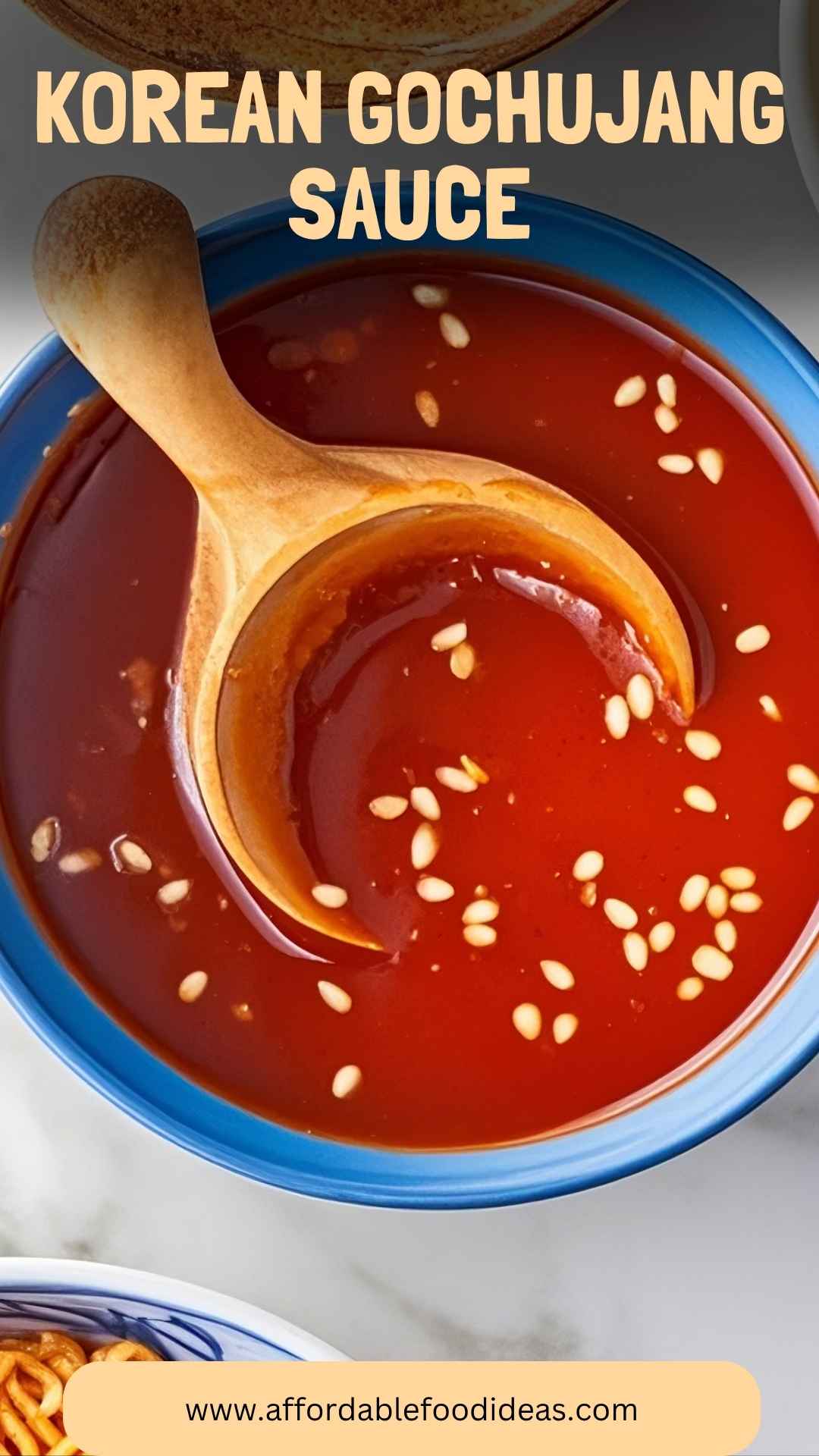
What is Korean Gochujang Sauce?
Gochujang is a traditional Korean chili paste made from red chili powder, glutinous rice, fermented soybeans, and salt. Its rich red color signifies the bold flavors packed within.
This isn’t just your average hot sauce; gochujang offers a perfect blend of sweetness, heat, and depth, making it a versatile ingredient in a myriad of dishes.
As I learned more about gochujang, I became fascinated with its history. Originating over a thousand years ago, this condiment has become a staple in Korean cuisine, often used in dishes like bibimbap and tteokbokki.
The Ingredients
The beauty of gochujang lies in its simple yet powerful ingredients. Here’s what you need to whip up a fantastic Korean Gochujang sauce:
- 1 tablespoon pure maple syrup
- 2 to 3 tablespoons Korean chili paste (gochujang)
- 1 teaspoon freshly grated ginger
- 1 tablespoon toasted sesame oil
- 1½ tablespoons seasoned rice vinegar
These ingredients blend harmoniously, creating a sauce that’s perfect for marinades, dipping sauces, or even a simple dressing.
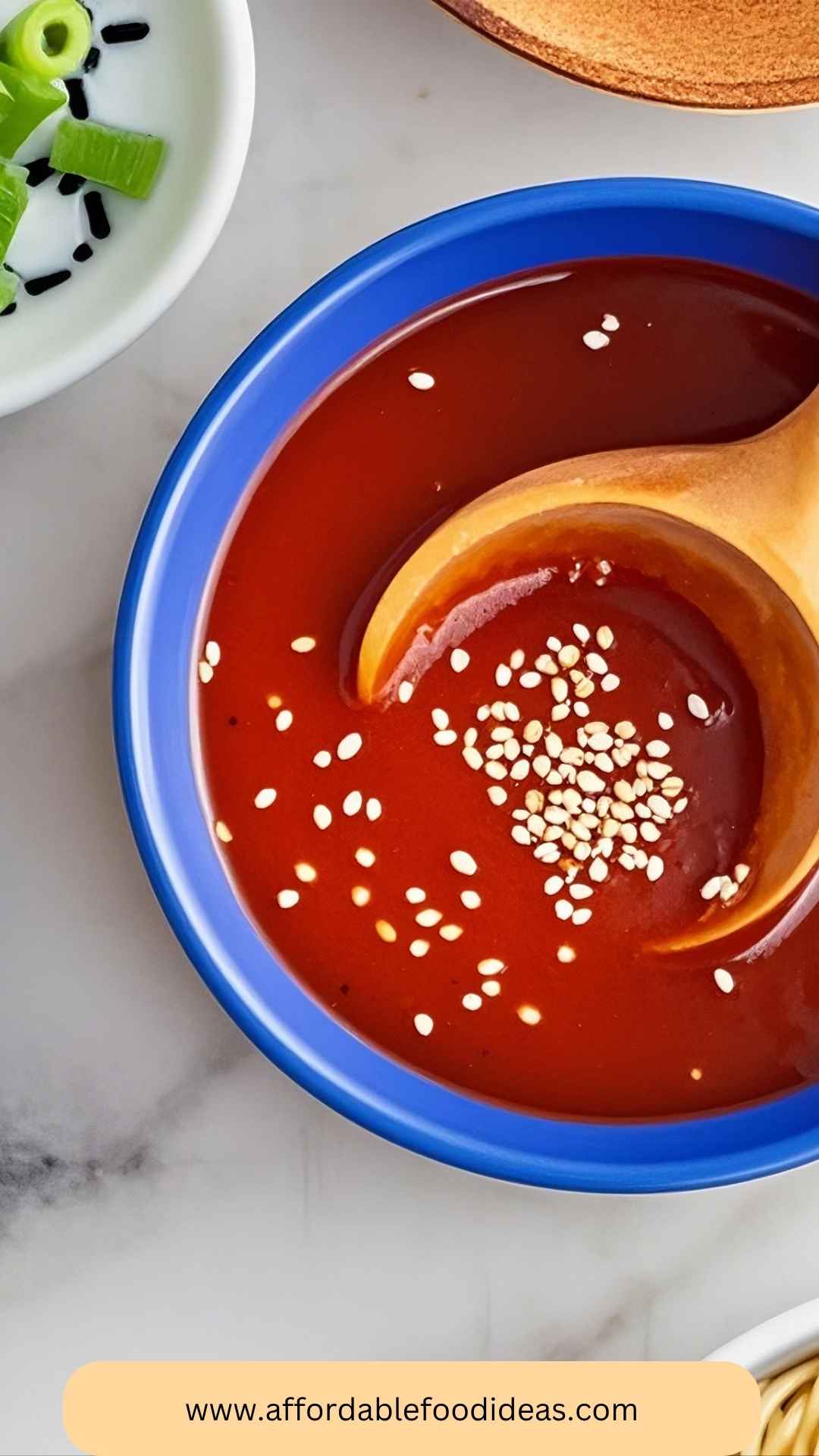
How to make Korean Gochujang Sauce?
Here’s a quick intro: Making Korean Gochujang Sauce is blissfully uncomplicated. With just a few ingredients, you can elevate your meals with a bold kick. Let’s roll up our sleeves and get to it.
Step 1: Gather Your Ingredients
Before we embark on this flavorful journey, let’s collect everything we need. Trust me, having your ingredients ready makes cooking a breeze.
Step 2: Measure the Gochujang
Start with 2 to 3 tablespoons of gochujang. If you enjoy heat, lean towards the higher end. If you prefer milder flavors, stick to 2 tablespoons.
Step 3: Sweeten it Up
Add 1 tablespoon of pure maple syrup to the gochujang. Maple syrup complements the spice and brings a delightful sweetness. It’s like inviting your best friend to the party—everything just gets better.
Step 4: Add Ginger
Next, grasp a fresh ginger piece and grate 1 teaspoon. The zing from ginger elevates the sauce, adding a refreshing twist.
Step 5: Toasted Sesame Oil
Pour in 1 tablespoon of toasted sesame oil. This isn’t just an ingredient; it’s the secret weapon. The nutty aroma fills the kitchen and adds richness to our sauce.
Step 6: Season with Rice Vinegar
Finally, introduce 1½ tablespoons of seasoned rice vinegar. This will cut through the heat, providing a perfect balance of flavors. Give everything a good stir until well combined.
Step 7: Taste and Adjust
At this stage, taste your gochujang sauce. Love it? Excellent! If you want more sweetness, add a touch more maple syrup. For an extra kick, add more gochujang.
Notes
Here are a few helpful tips to ensure your gochujang sauce turns out perfectly:
- Experiment with Sweetness: Everyone’s palate is different. Adjust the maple syrup to match your taste.
- Fresh Ingredients Matter: Fresh ginger truly makes a difference in flavor. Don’t skip it!
- Storage: This sauce keeps well in the fridge. Make a batch and enjoy it all week!
- Spice Levels: If you’re unsure about the spice level, start with less gochujang. You can always add more later.
- Use Quality Ingredients: The better quality your ingredients, the better your finished product will taste.
Storage Tips
To keep your gochujang sauce fresh, store it in an airtight container in the refrigerator. It should last about a week. But let’s be real—once you’ve tasted this sauce, it may not last that long!
Serving Suggestions
Gochujang sauce is truly versatile. Here are five serving ideas that can elevate your meals:
- Grilled Chicken Marinade: Use the sauce as a marinade for chicken. It adds an irresistible flavor and keeps the meat tender and juicy. Simply marinate for at least 30 minutes before grilling.
- Stir-Fried Veggies: Stir-fry a mix of your favorite vegetables and drizzle the sauce over the top to finish cooking. It turns plain veggies into a spicy Asian delight.
- Rice Bowls: Drizzle gochujang sauce over bowl meals. Top with grilled chicken, veggies, and a fried egg for a filling and nutritious dish.
- Dipping Sauce: Mix gochujang with a bit of sesame oil and serve alongside crispy tofu or fresh spring rolls. It’s a game-changer.
- Tacos: Seriously, tacos. Add gochujang sauce to your beef, chicken, or even veggie tacos for a spicy twist that’ll leave you craving more.
What Other Substitutes Can I Use in Korean Gochujang Sauce?
Sometimes, we might not have gochujang on hand, or perhaps we’re looking for something different. Here are five substitutes you can consider:
- Sriracha: If you need a kick, sriracha is a popular hot sauce that can work in a pinch, though it’s spicier and less sweet.
- Chili Garlic Sauce: This sauce also has garlic bits and comes with a punch. It might be less sweet but can still work wonders.
- Harissa Paste: A North African chili paste that has spices and herbs, giving a different profile but still rich in flavor and heat.
- Thai Red Curry Paste: Another great alternative, red curry paste has spices and aromatics that offer a flavorful punch, though it will impart a different taste.
- Homemade Chili Paste: Mixing equal parts of chili powder, sugar, and water can create a makeshift chili paste. Add garlic for depth if desired.
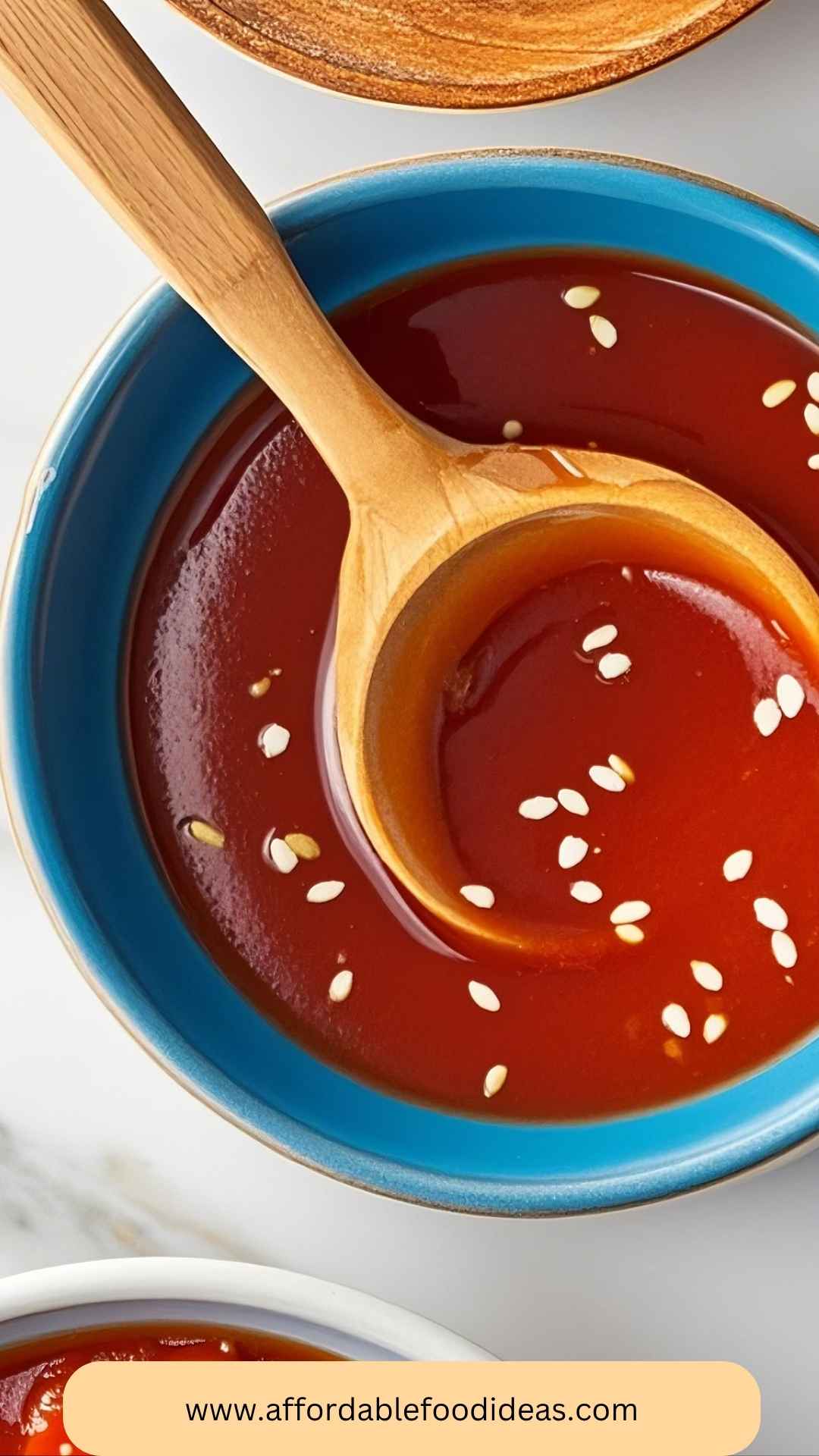
Conclusion
Creating your own Korean Gochujang sauce has been a delicious adventure for me. With its sweet and spicy touch, I’ve discovered new ways to enhance my everyday meals.
Whether marinating a chicken, drizzling it over a rice bowl, or simply using it as a dip, this sauce does not disappoint.
Each time I pull it from the fridge, it feels like opening a little jar of happiness. I encourage you to dive into this flavorful world—your taste buds will thank you! So, what’s stopping you? Grab those ingredients and let’s get cooking!
You’ll also like the following recipes!
Korean Gochujang Sauce – Affordable Food Ideas
Ah, Korean Gochujang sauce. Just saying the name makes my taste buds tingle with anticipation. When I first discovered this spicy, sweet, and savory condiment, it felt like finding a secret key to a treasure chest of flavor.
You’re at a lively summer barbecue, the grill is sizzling, and someone brings out a bowl of grilled chicken glazed with gochujang sauce.
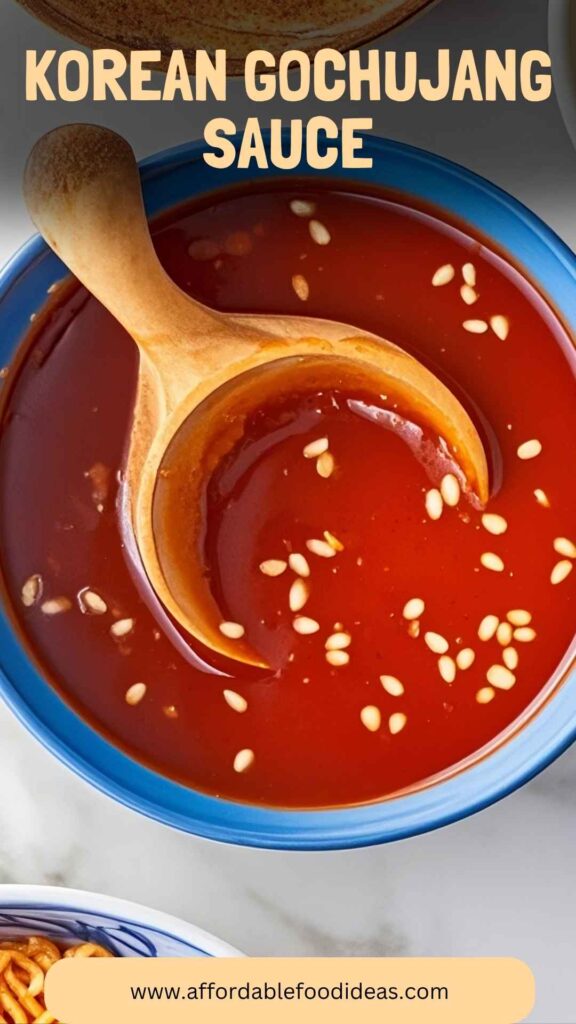
Ingredients
Instructions
Step 1: Gather Your Ingredients
-
Before we embark on this flavorful journey, let’s collect everything we need. Trust me, having your ingredients ready makes cooking a breeze.
Step 2: Measure the Gochujang
-
Start with 2 to 3 tablespoons of gochujang. If you enjoy heat, lean towards the higher end. If you prefer milder flavors, stick to 2 tablespoons.
Step 3: Sweeten it Up
-
Add 1 tablespoon of pure maple syrup to the gochujang. Maple syrup complements the spice and brings a delightful sweetness. It’s like inviting your best friend to the party—everything just gets better.
Step 4: Add Ginger
-
Next, grasp a fresh ginger piece and grate 1 teaspoon. The zing from ginger elevates the sauce, adding a refreshing twist.
Step 5: Toasted Sesame Oil
-
Pour in 1 tablespoon of toasted sesame oil. This isn't just an ingredient; it's the secret weapon. The nutty aroma fills the kitchen and adds richness to our sauce.
Step 6: Season with Rice Vinegar
-
Finally, introduce 1½ tablespoons of seasoned rice vinegar. This will cut through the heat, providing a perfect balance of flavors. Give everything a good stir until well combined.
Step 7: Taste and Adjust
-
At this stage, taste your gochujang sauce. Love it? Excellent! If you want more sweetness, add a touch more maple syrup. For an extra kick, add more gochujang.
Nutrition Facts
Servings 4
- Amount Per Serving
- Calories 56kcal
- % Daily Value *
- Total Fat 4g7%
- Saturated Fat 0.6g3%
- Sodium 116mg5%
- Total Carbohydrate 5g2%
- Dietary Fiber 1g4%
- Sugars 3g
- Protein 1g2%
* Percent Daily Values are based on a 2,000 calorie diet. Your daily value may be higher or lower depending on your calorie needs.
Note
- Experiment with Sweetness: Everyone’s palate is different. Adjust the maple syrup to match your taste.
- Fresh Ingredients Matter: Fresh ginger truly makes a difference in flavor. Don’t skip it!
- Storage: This sauce keeps well in the fridge. Make a batch and enjoy it all week!
- Spice Levels: If you’re unsure about the spice level, start with less gochujang. You can always add more later.
- Use Quality Ingredients: The better quality your ingredients, the better your finished product will taste.



